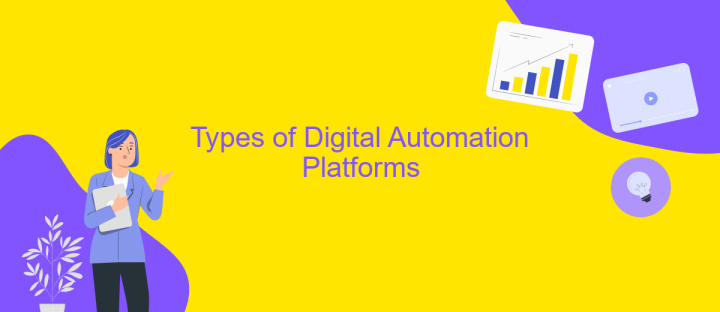Digital Automation Platform
In today's rapidly evolving technological landscape, businesses are increasingly turning to Digital Automation Platforms to streamline operations and enhance productivity. These platforms integrate advanced tools and technologies, enabling organizations to automate repetitive tasks, reduce human error, and improve efficiency. By leveraging digital automation, companies can focus on strategic growth and innovation, ensuring they stay competitive in a fast-paced digital world.
Introduction
In the rapidly evolving landscape of technology, Digital Automation Platforms (DAPs) are emerging as pivotal tools for organizations seeking to enhance efficiency and streamline operations. These platforms integrate various digital processes, allowing businesses to automate repetitive tasks, reduce human error, and improve overall productivity. As companies increasingly adopt digital transformation strategies, understanding the capabilities and benefits of DAPs becomes essential.
- Streamlined Workflow: DAPs automate routine tasks, freeing up valuable time for employees to focus on more strategic activities.
- Enhanced Accuracy: By minimizing human intervention, these platforms significantly reduce the likelihood of errors.
- Scalability: DAPs offer scalable solutions that grow with the organization's needs, ensuring long-term sustainability.
- Cost Efficiency: Automation leads to cost savings by optimizing resource allocation and reducing operational expenses.
As the digital landscape continues to evolve, the adoption of Digital Automation Platforms will likely become a standard practice across industries. Organizations that leverage these technologies can expect to gain a competitive edge by optimizing their operations and fostering innovation. In the following sections, we will explore the key features, implementation strategies, and real-world applications of DAPs, providing a comprehensive understanding of their transformative potential.
Benefits of Digital Automation Platforms

Digital Automation Platforms offer significant benefits by streamlining business processes and enhancing operational efficiency. These platforms automate repetitive tasks, reducing manual effort and minimizing errors. As a result, organizations can allocate resources more effectively, allowing employees to focus on high-value activities that drive innovation and growth. Moreover, automation platforms provide real-time data insights, enabling better decision-making and strategic planning. By integrating various business functions, these platforms ensure seamless communication and collaboration across departments, fostering a more agile and responsive organization.
One notable advantage of using digital automation platforms is the ease of integrating multiple applications and services. Tools like ApiX-Drive simplify this process by allowing businesses to connect different systems without extensive coding or technical expertise. This integration capability ensures that data flows smoothly between applications, enhancing productivity and reducing the risk of data silos. Additionally, digital automation platforms can scale with business growth, accommodating increased workloads and evolving business needs. Overall, these platforms empower businesses to optimize their operations, improve customer experiences, and maintain a competitive edge in the digital landscape.
Types of Digital Automation Platforms

Digital automation platforms are essential tools that streamline business processes, enhance productivity, and reduce human error. These platforms integrate various technologies to automate tasks across different departments, enabling organizations to focus on strategic initiatives. Understanding the types of digital automation platforms available can help businesses choose the right solution for their needs.
- Robotic Process Automation (RPA): RPA platforms automate repetitive tasks by mimicking human actions within digital systems. They are ideal for tasks like data entry and invoice processing.
- Business Process Management (BPM): BPM platforms focus on optimizing and automating complex business processes. They provide tools for modeling, analyzing, and improving workflows.
- Intelligent Automation (IA): Combining RPA with artificial intelligence, IA platforms handle more complex tasks by learning and adapting to new data inputs.
- Integration Platform as a Service (iPaaS): iPaaS solutions facilitate the integration of different applications and data sources, automating data flow across systems.
Choosing the right digital automation platform depends on the specific needs and goals of an organization. Whether the focus is on simple task automation or comprehensive process optimization, understanding these types can guide businesses in making informed decisions to enhance their operational efficiency.
Key Considerations When Choosing a Digital Automation Platform

Choosing the right Digital Automation Platform (DAP) is crucial for enhancing operational efficiency and achieving business objectives. The right platform should align with your organization's goals and integrate seamlessly with existing systems. It's essential to evaluate the platform's scalability, ensuring it can grow with your business and adapt to future needs.
Another critical factor is user-friendliness. A platform that is intuitive and easy to navigate can significantly reduce the learning curve for your team, leading to faster implementation and adoption. Additionally, consider the platform's ability to support various automation processes and workflows, offering flexibility and customization to meet specific requirements.
- Integration capabilities with existing tools and systems
- Scalability to accommodate business growth
- User-friendly interface for easy adoption
- Robust security features to protect sensitive data
- Comprehensive support and training resources
Ultimately, the decision should be based on a thorough assessment of your organization's unique needs and long-term goals. Engage stakeholders from different departments to gather diverse perspectives and ensure the selected platform provides comprehensive solutions. By considering these factors, you can choose a DAP that enhances productivity and drives innovation.


Future Trends in Digital Automation Platforms
As digital automation platforms continue to evolve, one of the key future trends is the integration of artificial intelligence and machine learning. These technologies will enable platforms to not only automate repetitive tasks but also make intelligent decisions based on data analysis. This shift will lead to more efficient workflows and allow businesses to focus on strategic tasks rather than operational ones. Additionally, the rise of no-code and low-code platforms will empower non-technical users to create and manage automation processes, democratizing access to these powerful tools.
Another significant trend is the increasing importance of seamless integration capabilities. As businesses rely on a multitude of software applications, the need for platforms that can easily connect these systems is paramount. Services like ApiX-Drive are at the forefront, offering user-friendly solutions for integrating various applications without the need for extensive coding knowledge. This trend will continue to grow, enabling businesses to streamline operations and improve data flow across different platforms, ultimately enhancing productivity and innovation.
FAQ
What is a Digital Automation Platform?
How does a Digital Automation Platform benefit businesses?
What types of processes can be automated using a Digital Automation Platform?
Can a Digital Automation Platform integrate with existing software systems?
What should businesses consider when choosing a Digital Automation Platform?
Time is the most valuable resource in today's business realities. By eliminating the routine from work processes, you will get more opportunities to implement the most daring plans and ideas. Choose – you can continue to waste time, money and nerves on inefficient solutions, or you can use ApiX-Drive, automating work processes and achieving results with minimal investment of money, effort and human resources.

